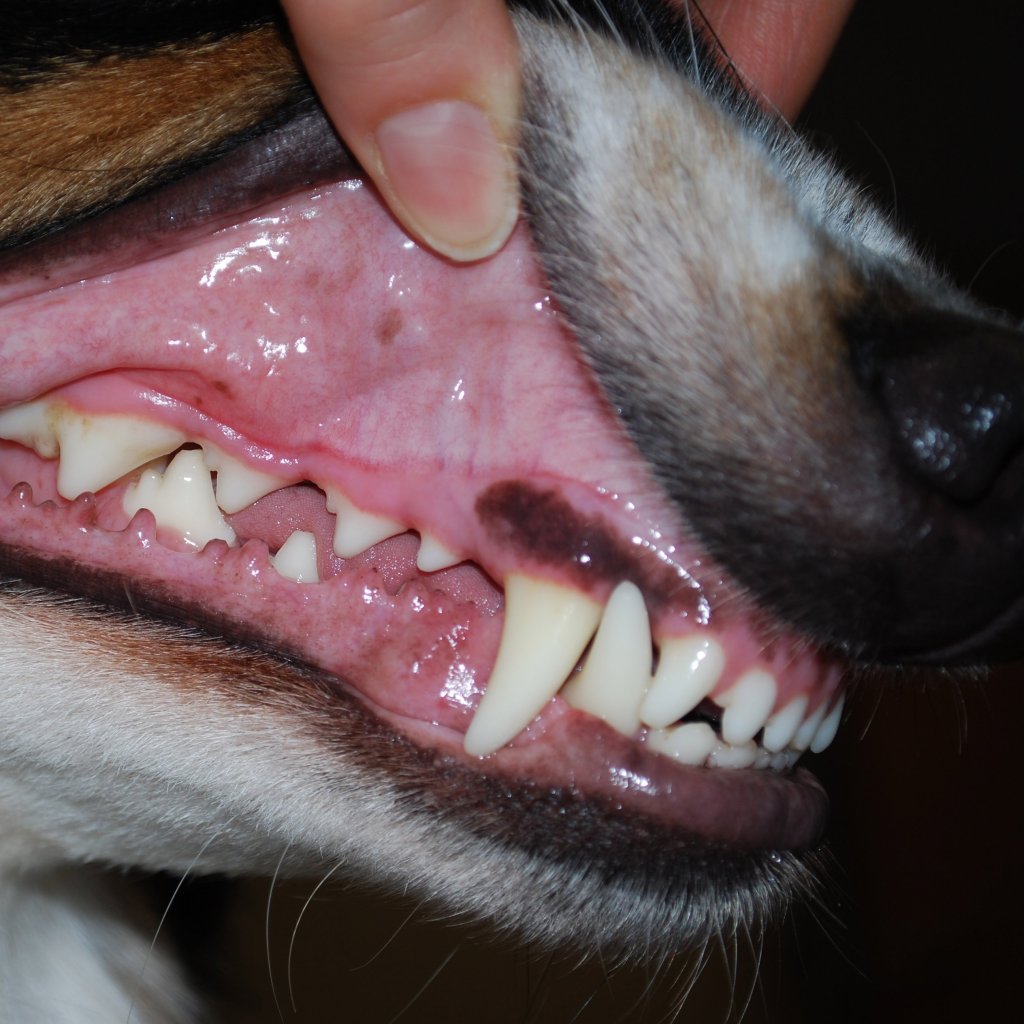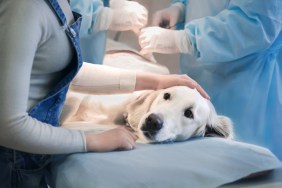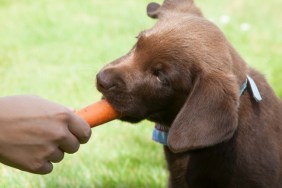Ever wonder what the most common health problem is for dogs? It’s periodontal disease. A staggering 75-80 percent of dogs two and a half years and older may start to develop trouble with their teeth. Tooth and gum problems can become painful and serious if left untreated and may possibly cause your dog to become aggressive or stop eating.
Symptoms of Periodontal Disease in dogs
- Bad breath
- Yellow or spotty teeth
- Swollen gums
- Difficulty in chewing
- Weight loss
- Broken or missing teeth
- Nasal and eye discharge
- Blood in the saliva
- Drooling
- Tearing or swelling below one eye
How does your dog get periodontal disease?
Periodontal disease starts with plaque. This is the white film that accumulates on our teeth. If the plaque is not removed through regular tooth brushing, it will mineralize (harden) and turn into tartar. As the tartar builds, the plaque continues to accumulate and infect the gums. Plaque and bacteria unchecked over time can enter the bloodstream and cause disease in the heart, lungs, liver and kidneys.
How can periodontal disease be prevented?
Unfortunately, periodontal disease cannot be reversed. It can, however, be slowed or stopped with proper dental care. There are several things you can do to prevent this disease from affecting your best friend. At least once a week you should brush your dog’s teeth and feed a nutritionally balanced dry diet, void of wheat and corn that can act as sugar between the teeth and cause decay.
You can purchase toothbrushes made especially for dogs, or you can use a soft child’s toothbrush, a finger toothbrush, a gauze pad around a finger, or a cotton swab. Use toothpaste specially formulated for dogs and focus on the back molars as they tend to develop plaque more quickly than frontal teeth. Dog toothpaste contains ingredients that continue to be effective in preventing decay long after brushing. Most toothpastes have a special food flavoring to make it more appealing to your dog. Stay away from human toothpaste, baking soda or salt, as many dogs don’t like the taste, and these products might possibly upset their digestive systems or create an allergic reaction. Also, feeding your pet a dental biscuit like Hartz Crunch ‘n Clean Dog Biscuits or Cat Treats is a good form of dental hygiene health for your dog or cat.
Feed a nutritionally balanced diet, preferably dry. A hard, crunchy premium food will scrape against the teeth and help to inhibit bacteria from growing. Provide dental chew toys and chew items. Not only are they fun for your dog, he doesn’t even realize how good they are for him.
Supply your dog with plenty of “teeth cleaning” chew toys and bones, especially knobby toys, rope toys and floss toys. Rawhide is another chew item that rubs against the dog’s teeth and removes harmful plaque, but I advise against rawhide as it swells to five times the size in your dog’s stomach and can take two weeks to digest, posing the threat of intestinal blockage. So a great alternative to rawhide is pork skin. Anything you can find in the form of rawhide, you can now find in pork skin. It’s easily digestible, more nutritional, and still provides a great tartar scraping effect on the teeth.
Lastly, get regular dental exams by a veterinarian and schedule your dog for a yearly teeth cleaning. With a little effort, your dog could end up having a smile as good as yours!
Colleen Paige is an animal behaviorist, the Editor-in-Chief of Pet Home Magazine and the author of The Good Behavior Book for Dogs. She offers advice to clients and readers alike, ranging from dog and cat training and pet friendly interiors and garden design to pet nutrition and pet safe pools and homes.




